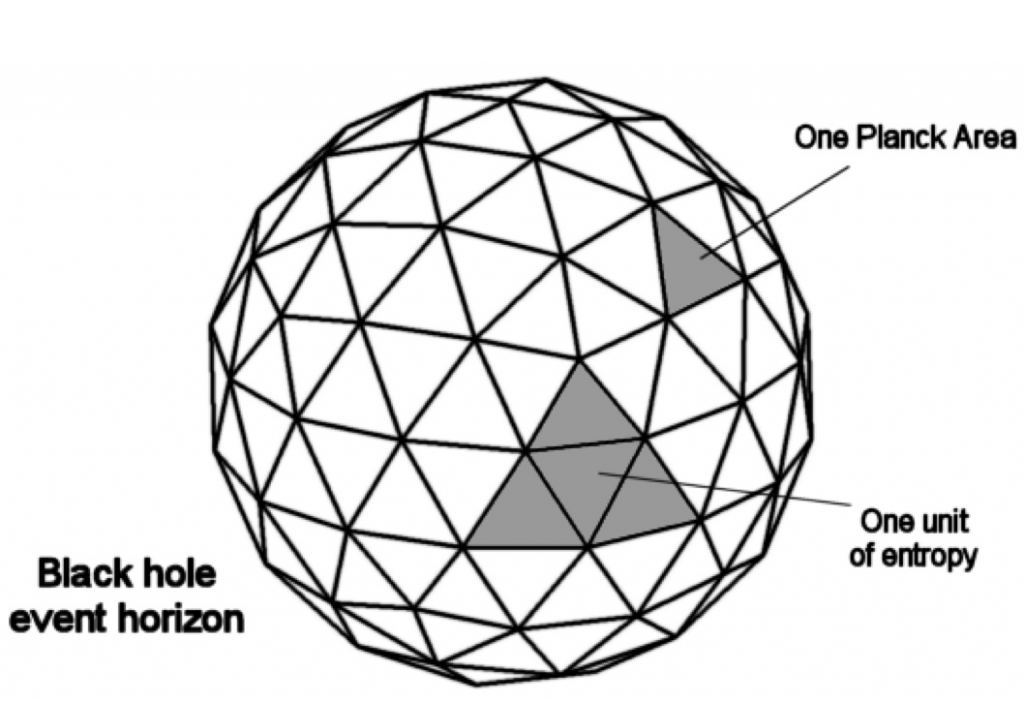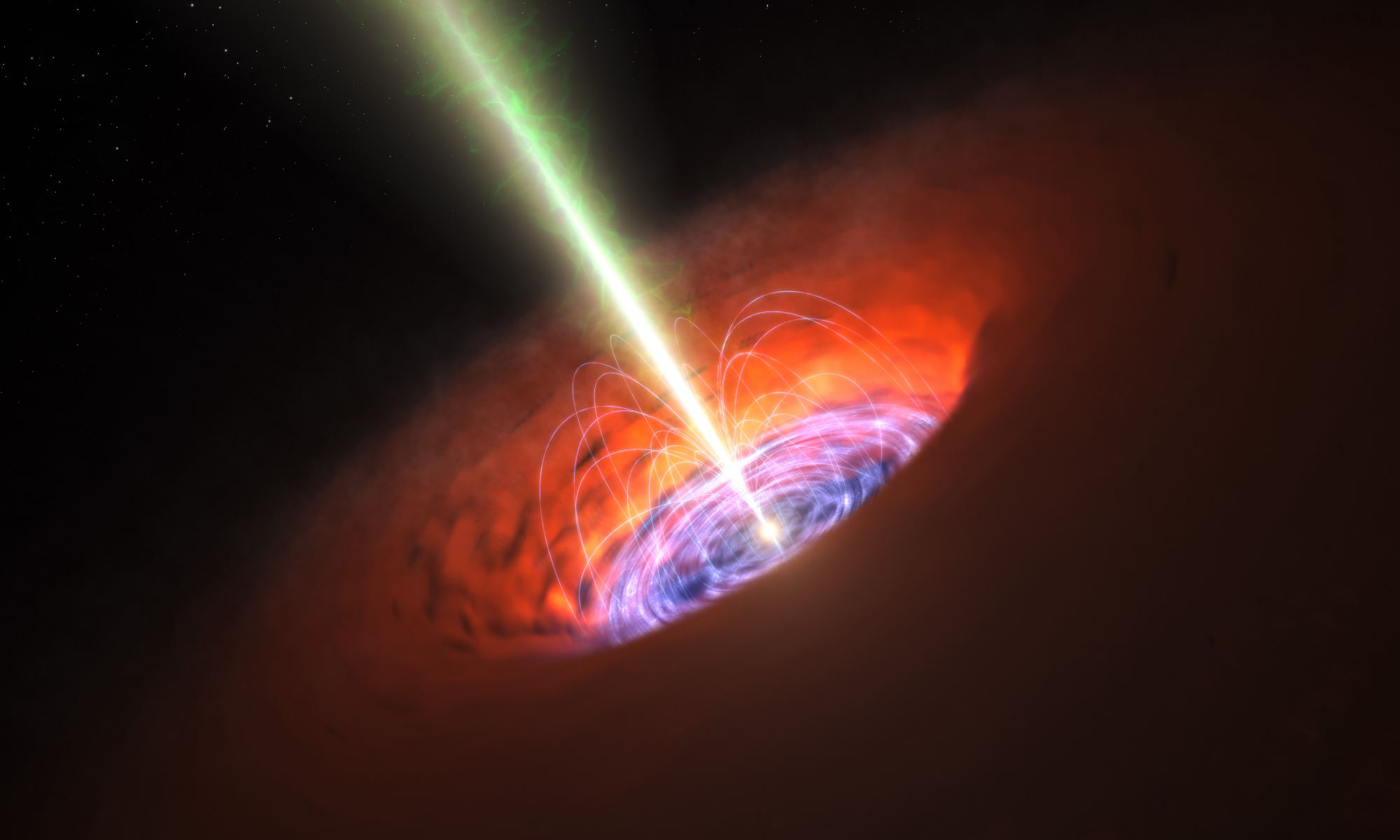In the classical theory of general relativity, black holes are relatively simple objects. They can be described by just three properties: mass, charge, and rotation. But we know that general relativity is an incomplete theory. Quantum mechanics is most apparent in the behavior of tiny objects, but it also plays a role in large objects such as black holes. To describe black holes at a quantum level, we need a theory of quantum gravity. We don’t have a complete theory yet, but what know so far is that quantum mechanics makes black holes more complex, giving them properties such as temperature and perhaps even pressure.
Temperature is perhaps the best known quantum property of a black hole. Because of the fuzziness of quantum particles, energy cannot be completely bound by a black hole’s event horizon. Sometimes energy can escape its gravitational prison through a process known as Hawking radiation. The amount of energy that escapes is tiny, but it means that black holes have a (very cold) temperature. And that means black holes can be described in terms of the laws of thermodynamics. For regular matter, thermodynamics describes not just the temperature of an object, but also properties such as pressure. That’s where this new study comes in.

The team was looking at a thermodynamical property known as entropy. Entropy is a subtle concept, often described as a measure of the disorder of a system or the amount of information needed to describe a system. It relates to the temperature of an object through the second law of thermodynamics. In black holes, entropy is related to the surface area of an event horizon. Physicists study black hole entropy because it could help us answer fundamental questions in quantum gravity, such as whether a black hole can destroy information.
So the team was applying entropy equations to a simple black hole, trying to figure out what happens when you extend Einstein’s equations into quantum theory, which is a common trick known as the semi-classical approach. When they did this, they kept getting strange extra terms in their equations that they didn’t expect. These terms didn’t make sense until the team looked at them in terms of pressure. It turns out the extra terms act like pressure for a black hole in the same way that gas atoms in a container create pressure. In other words, when you apply quantum theory to a black hole, you get both temperature and pressure.
As with Hawking temperature, this quantum pressure for a black hole is extremely tiny. It’s far too small to affect the kinds of black holes we see in the universe. But the fact that it exists could have real consequences for the most extreme regions of the cosmos, such as the big bang. This particular model is too simple to apply to real systems, but it is an interesting clue toward a more complete theory of quantum gravity.
Reference: Xavier Calmet, et al. “Quantum gravitational corrections to the entropy of a Schwarzschild black hole.” Physical Review D 104.6 (2021): 066012.


Finally, an article that actually explains what the pressure finding is about. Thanks!